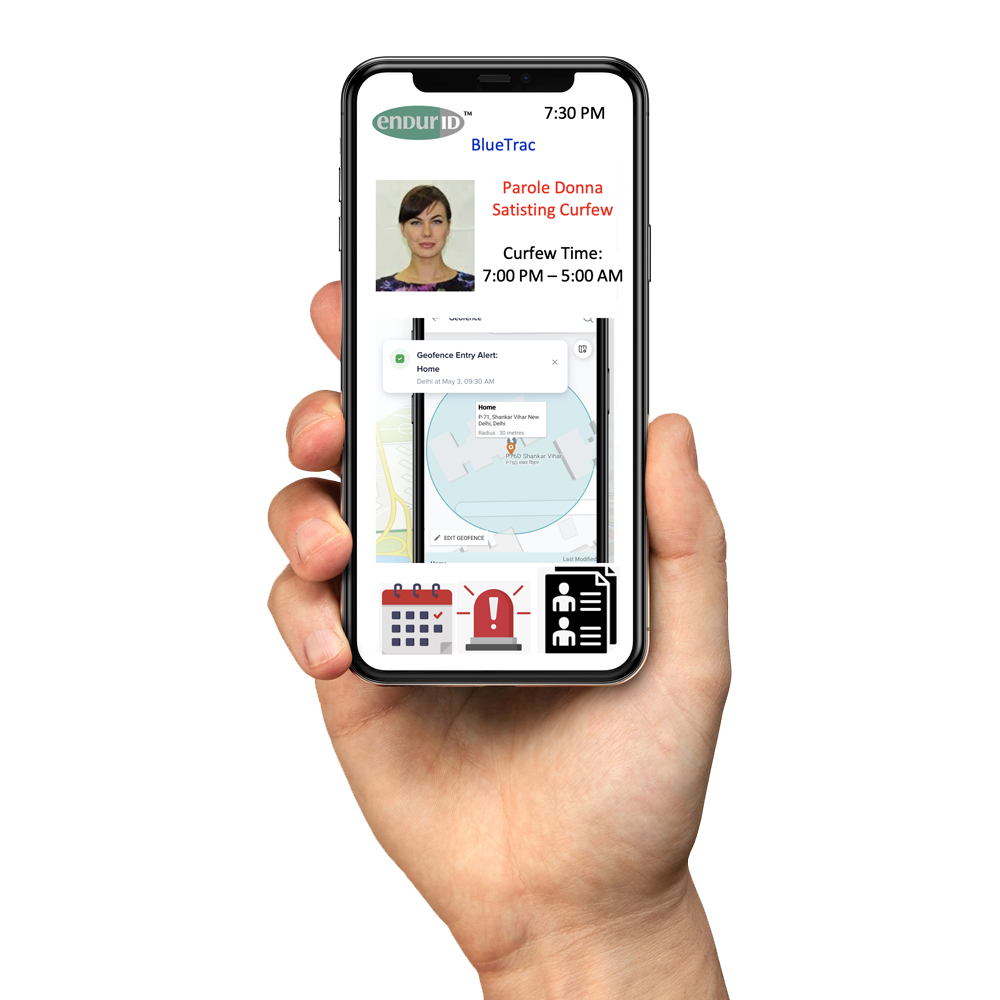Electronic monitoring (EM) has long been a cornerstone of community supervision programs for probationers and parolees. While traditional electronic ankle monitors have proven useful, they often have limitations, including false positives, battery challenges, and constant manual oversight. These issues distract parole officers, strain correctional budgets, and hinder parolees’ rehabilitative goals. Enter Endur ID’s Revolutionary […]
Nursing home ID bands are essential for resident safety and security. They guarantee accurate identification, helping prevent care and medication mix-ups, which is especially important for residents with cognitive impairments. These bands facilitate communication among caregivers, providing instant access to critical information. Certain technologies can allow you to monitor residents in real-time, reducing wandering […]
Hospital wristbands guarantee patient safety and security by verifying identities and minimizing medical errors. They enable quick access to patient data through integration with electronic medical records, and their durable materials guarantee longevity. Wristbands come in different types, like RFID and color-coded alerts, enhancing safe healthcare delivery. Adhering to HIPAA regulations, they safeguard patient […]
Maternity patient ID bands directly improve maternal healthcare by ensuring precise patient identification and reducing medical errors. These bands enhance safety during labor and delivery, providing instant access to accurate health records. They support seamless communication among healthcare providers, minimizing misidentifications. Educating mothers on ID bands’ significance empowers them to safeguard their health. If […]
Guarantee patient safety in behavioral health by using wristbands for accurate identification and to reduce medication errors. Standardize color codes for easy identification of allergies and conditions. Regularly train staff on wristband protocols, utilizing technology for real-time access to patient data. Foster compliance by involving patients in the wristband process, boosting their understanding and engagement. […]
You’re on the verge of considerably improving patient engagement in behavioral health by incorporating color-coded wristbands. These wristbands serve as essential communication tools and enhance safety by reducing medication errors by up to 30%. They provide immediate visual cues for healthcare providers and empower patients to participate actively in their care. Engaged patients achieve better […]
Implementing standardized color-coded wristbands is essential for improving hospital safety and protocols. You guarantee critical information is instantly visible, reducing the risk of medical errors and enhancing communication. For example, red wristbands alert staff to allergies, while yellow warns of fall risks. Standardization minimizes confusion, a common issue over 70% of nurse executives face with […]
Color-coded wristbands simplify patient assessment by giving instant access to essential health information. Each color represents critical conditions or allergies, such as red for allergies and yellow for fall risk, aiding in rapid decision-making. This system reduces the need for verbal instructions, streamlines your workflow, and minimizes medication errors. By ensuring everyone on your […]
Using color-coded wristbands in behavioral health facilities can improve patient safety and communication. It lets you quickly identify and address diverse needs, such as patients at risk for self-harm, and enhances staff coordination. With standardized colors, you minimize confusion and guarantee all team members act efficiently, which is vital in emergencies. Consistent training further guarantees […]
You’re integrating color-coded wristbands into pediatric care to precisely manage allergies and special needs, offering vital visual alerts that enhance patient safety. By employing standardized color codes—red for non-latex allergies, blue for food allergies, and others—you guarantee quick identification of sensitivities, markedly reducing medical errors. These wristbands serve as immediate visual identifiers, essential when […]
You need pediatric bar-coded wristbands in hospital nurseries to drastically reduce the risk of misidentification, which affects 4.6 newborns per 1000 births. These wristbands contain unique barcodes linked to medical records, ensuring accurate information access and patient tracking. Evidence shows they reduce misidentification events by over 80%, medication errors by 36%, and enhance overall neonatal […]
You can significantly reduce medication errors in pediatric wards by implementing bar-coded wristbands. These wristbands contain unique identifiers linked to detailed patient records. Scanning both the patient’s wristband and the medication barcode guarantees accurate administration. Evidence shows this process cuts medication errors by 57.5%, enhancing safety and compliance with national standards. Healthcare providers benefit from […]
You’ll find that bar-coded wristbands enhance patient safety by reducing misidentification and medication errors by up to 70%. These wristbands guarantee real-time data access to critical information like allergies and medical history, essential for patient care. Infants benefit from soft, hypoallergenic bands, while elderly patients see improved medication management and identification accuracy. Across all age […]
You’d be surprised how greatly Electronic Health Records (EHRs) enhance hospital safety. EHRs provide up-to-date patient data, leading to a 94.6% e-prescribing rate reducing medication errors. Their automation improves clinician workflows and enables an 85.9% effective tracking rate for laboratory tests. EHRs also facilitate secure data sharing through standards like HL7, which boosts communication among […]
To create a safety culture in your hospital, emphasize open communication and encourage error reporting without fear of retribution. Implement ongoing staff training on safety protocols and conduct regular safety audits to identify potential hazards. Leadership should model safe behaviors and integrate safety into strategic plans. Employ non-punitive error reporting systems, strict infection control measures, […]
To address and prevent medication errors in hospital settings, focus on implementing standardized protocols like the Five Rights: right patient, drug, dose, time, and route. Engage in clear communication and regular training sessions for all staff members. Encourage a safety culture where errors can be openly discussed without blame. Promote patient involvement by maintaining up-to-date […]
Leveraging advanced patient tracking systems can enhance hospital efficiency and safety. You’ll see a 30% reduction in patient wait times, improving throughput and satisfaction. Real-time data on patient locations optimizes resource allocation and care coordination. These systems integrate with EHRs, allowing seamless communication and timely interventions. They also bolster data security with robust encryption and […]
Inmate wristbands streamline inmate identification and enhance security, providing a reliable tool for correctional facility staff. They employ durable, stretch-resistant materials with secure clasp system to deter unauthorized removal. Integrated barcodes and color coding can help you quickly classify and manage inmates, ensuring accurate tracking. The waterproof design adds longevity, reducing replacements and saving resources. […]
Ensuring medication safety in hospitals involves a multi-faceted approach. Embrace a blame-free culture to promote error reporting and continuous learning. Leverage health information technology like EHRs and CPOE to track medications and enhance accuracy. Implement barcoding systems and automated dispensing to reduce errors. Train staff on medication administration best practices and routinely conduct audits to […]
To enhance patient flow management effectively, streamlining communication and scheduling to reduce the 74% of time patients spend waiting is crucial. Implement fast-track systems for non-urgent cases and foster multidisciplinary teams to improve accountability and streamline care stages. Utilize data analytics to monitor patient flow and anticipate demand, allowing for proactive staffing and resource allocation. […]



















